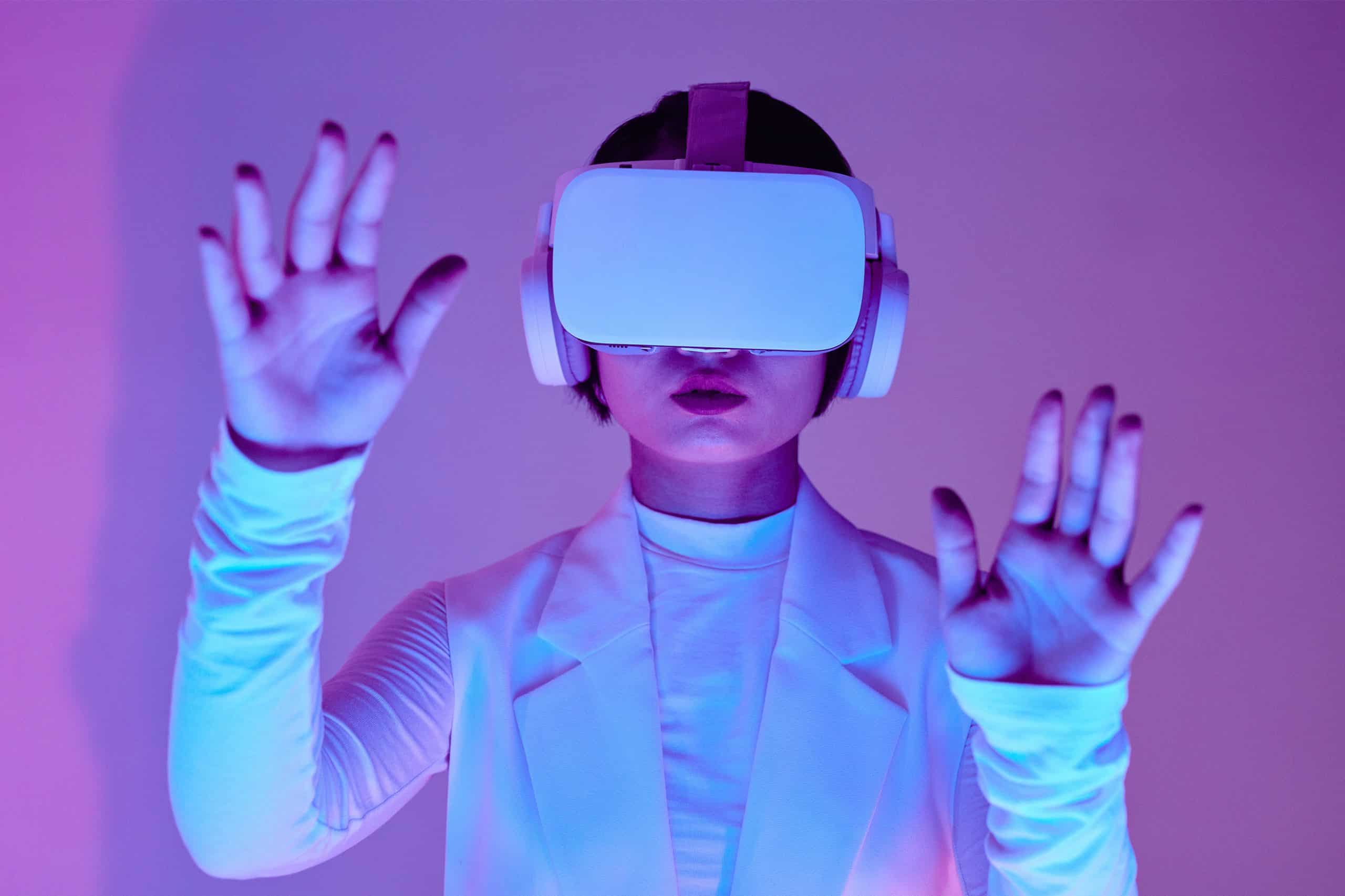The world as we know it is changing at a breakneck speed, thanks to the remarkable advancements in technology that have transformed every aspect of our lives. From how we communicate to how we work, shop, and even entertain ourselves, technology is reshaping the world in once only imaginable ways. And the next decade promises to be even more exciting, with an array of groundbreaking innovations set to revolutionize our lives in ways we cannot imagine.

In this article, we’ll explore ten of the most incredible technological innovations that could change the world as we know it and how they will impact our daily lives. So buckle up and get ready to dive into the fascinating world of the future.
1. Artificial Intelligence
Artificial intelligence (AI) is expected to significantly impact various areas of our lives in the coming decade. AI refers to developing intelligent machines that can simulate human intelligence, such as learning, reasoning, and solving problems. With advancements in AI, machines are becoming more capable of performing tasks that traditionally require human intelligence, such as language translation, image recognition, and decision-making.
AI is expected to transform many industries, including healthcare, finance, manufacturing, and transportation. For example, AI can analyze large datasets in healthcare to improve diagnoses and treatment plans. In finance, AI can detect fraud and optimize investment portfolios. In manufacturing, AI can automate processes and improve quality control. In transportation, AI can be used to develop autonomous vehicles, improving road safety and efficiency.
However, adopting AI (such as ChatGTP, which has been the rave recently) raises significant ethical and societal concerns, including privacy, bias, and job displacement. It is essential to consider AI’s potential benefits and risks and ensure its development and implementation align with our values and principles.
AI is a broad topic, and we went in-depth on Artificial Intelligence (click here), stating the four main types of artificial intelligence, starting from reactive machines that accept input to consistently deliver the same output, down to self-aware machines of the future.
2. Internet of Things (IoT)
The Internet of Things (IoT) is a technology that enables physical objects to be connected and digitally monitored. Through embedded sensors and actuators, IoT devices can communicate with computing systems via wired or wireless networks. Five types of IoT devices are reshaping the way we interact with technology:
- Consumer Internet of Things (CIoT): These devices are designed for consumer applications such as wearables, smartphones, smart homes, and personal assistants.
- Commercial Internet of Things: These devices are used in large venues such as shopping malls, commercial office buildings, hospitals, and hotels to deliver personalized customer experiences.
- Industrial Internet of Things: These devices are found in large-scale factories and manufacturing plants to improve productivity and efficiency in agriculture, automotive, and logistics industries. For example, ABB is a Swiss company that manufactures compact sensors attached to the frame of low-voltage induction motors, where no writing is needed. The company uses these sensors to get information about motor health via smartphones or the internet through a secure server.
- Internet of Military Things (IoMT): IoMT devices are used in military settings to increase situational awareness and improve response times in battlefield situations.
- Infrastructure Internet of Things: These devices monitor and control rural and urban infrastructures such as bridges, railway tracks, and offshore wind farms.
IoT devices will continue to be integrated into our daily lives, allowing us to control and monitor our surroundings, from temperature and lighting to energy usage and security. As technology continues to evolve, the IoT will play a significant role in shaping the future of our world.
3. Augmented Reality (AR) and Virtual Reality (VR)
Augmented reality (AR) and Virtual reality (VR) are technologies transforming how we experience and interact with the world. AR allows us to overlay digital information onto the physical world, while VR immerses us in digital environments.

The potential applications of AR and VR are vast and varied. In entertainment and gaming, they can create fully immersive and interactive experiences. In training and education, they can simulate real-world scenarios, allowing learners to practice and improve their skills in a safe and controlled environment.
AR and VR can potentially revolutionise learning by catering to different learning styles. Visual learners can benefit from interactive 3D models and simulations, while auditory learners can receive audio feedback through AR and VR technologies. This will undoubtedly transform the educational system, making it more engaging and effective for learners of all ages.
4. 5G Networks
The fifth generation of wireless technology, 5G, promises to revolutionize how we connect and communicate. With its ultra-fast data transfer speeds and incredibly low latency, 5G networks will be the foundation for new technologies that will transform our daily lives.
Even though 5G networks are not as accessible as the predecessor at the time of writing this post, this technology, once readily available, will enable remote surgeries with precision and accuracy, facilitate seamless communication among self-driving cars, and create smart cities with a connected infrastructure that can adapt and respond in real-time. By providing faster connectivity and more reliable communication, 5G networks will drive innovation and improve efficiency across industries, paving the way for a more connected and intelligent world.
5. Autonomous vehicles
Autonomous Vehicles are self-driving cars that use a combination of sensors, cameras, and machine-learning algorithms to navigate roads without human intervention.
The emergence of autonomous vehicles is expected to transform the transportation industry significantly, offering more travel options, reducing traffic congestion, and improving safety.
In addition, autonomous vehicles will significantly impact the economy, changing how we travel and transport goods and creating new job opportunities in software development, data analysis, and fleet management.
While there are still some challenges to overcome, such as regulatory frameworks and public acceptance, the potential benefits of AVs are immense. They are expected to play a significant role in shaping the future of transportation.
6. Blockchain
Blockchain technology is a secure and transparent way of storing and sharing information, best known for its use in cryptocurrency transactions such as Bitcoin and Ethereum.
It can transform finance, healthcare, and supply chain management industries by providing an efficient and tamper-proof system for recording transactions.
By utilizing advanced cryptographic techniques, blockchain ensures the integrity and security of data, making it an ideal solution for various applications that require trust and transparency.
7. Biotechnology
Biotechnology is the use of technology in biology, which has the potential to revolutionize the medical industry. By utilizing biotech, we can cure diseases, extend life expectancy, and enhance human performance.
One area of biotechnology that has the potential to revolutionize healthcare is personalized medicine. Personalized medicine involves tailoring treatments to individual patients based on their unique genetic makeup. This approach can improve treatment outcomes, reduce side effects, and lower healthcare costs.
Other aspects include gene editing and the creation of synthetic organisms with distinct functions. With further advancements, biotechnology could lead to even more life-saving treatments and therapies and the ability to engineer and create new biological organisms for various purposes.

Overall, the field of biotechnology is advancing at an unprecedented pace, and it can potentially transform our lives in countless ways. However, there are also ethical considerations, such as the potential for unintended consequences or the need to ensure equitable access to these life-changing technologies.
8. Smart Homes
Smart homes will bring more convenience, comfort, and security to our living spaces in the coming years. With innovative home technology, we can control various home systems from anywhere, whether at home or away. Homeowners can automate tasks such as turning on and off lights, adjusting the temperature, opening and closing doors, and monitoring home security through smartphones, tablets, or other connected devices.
Smart home technology will also allow for more energy-efficient homes. For example, a smart thermostat can learn our preferred temperature settings and adjust the heating and cooling system accordingly, saving us money on energy bills. In addition, smart home security systems will offer more advanced features, such as facial recognition and voice commands, making our homes safer and more secure.
Smart home technology is expected to become more widespread and affordable, meaning more people will enjoy the benefits of a more intelligent home. This will significantly impact how we live, work, and interact with our living spaces in the coming years.
9. Renewable Energy
Renewable energy is a vital technological innovation that is set to shape our future. The widespread availability and affordability of renewable energy sources, such as hydropower, wind, and solar, presents an opportunity for us to reduce our dependence on fossil fuels and mitigate the impacts of climate change.
Renewable energy sources are considered cleaner and more sustainable than traditional fossil fuels, significantly contributing to carbon emissions, air pollution, and global warming. Renewable energy technologies can help reduce our carbon footprint, increase energy efficiency, and create a more sustainable future.
Moreover, the global energy demand is expected to rise significantly in the coming years, and renewable energy sources can play a critical role in meeting this demand sustainably. Governments and businesses worldwide are increasingly investing in renewable energy projects, and this trend is expected to continue as the technology becomes more accessible and efficient.
By harnessing renewable energy sources, we can transition to a more sustainable energy system, reduce our environmental impact, and create a cleaner, healthier, and more prosperous future for ourselves and future generations.
10. 3D printing
3D printing, also known as additive manufacturing, creates physical objects by depositing successive layers of material. The technology has become increasingly popular in recent years, as it offers a range of benefits such as cost-effectiveness, speed, and the ability to create complex geometries that are difficult to produce using traditional manufacturing methods.
In the context of reducing waste, 3D printing is a game-changer. Instead of relying on mass production and assembly lines that can lead to overproduction and excess waste, 3D printing allows for creating customized products and parts on demand. This means that manufacturers can produce exactly what is needed, when needed, without the risk of overproduction or wastage of materials.
Another benefit of 3D printing is its potential to reduce transportation-related carbon emissions. Manufacturers can reduce the need for long-distance transportation by producing parts and products locally, thereby reducing the associated carbon emissions. Furthermore, 3D printing also enables the use of recycled materials, which can help reduce the amount of waste sent to landfills.
Overall, 3D printing has the potential to revolutionize manufacturing and significantly reduce waste, leading to a more sustainable future.
Conclusion
In conclusion, the ten innovative technologies discussed in this article possess the potential to bring about significant changes to our world, influencing the way we live, work, and interact with one another. These technologies offer transformative capabilities from artificial intelligence to renewable energy, 5G networks to biotechnology, and smart homes to autonomous vehicles.
As we move forward, it is essential that we recognize and harness their potential to create a brighter future for ourselves and generations to come. We are responsible for making the most of these technologies and ensuring we utilize their potential to create a prosperous future for all.



